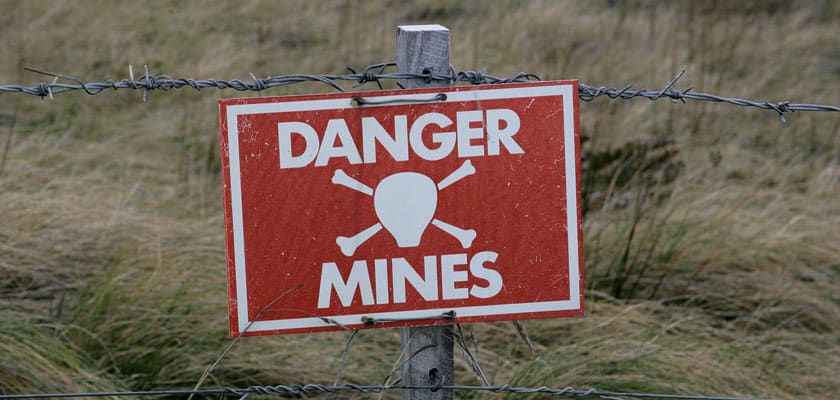YOU GOT THE POSITION... YOU'RE THE LEADER... NOW WHAT?
Menu

5 Minute Read…
I believe it’s completely unreasonable and unfair to expect your staff to follow your organizational culture’s unwritten rules.
After all, they are unwritten!
In too many organizations, leaders convey what to do (mission + job description) without ever defining or describing how to do it (culture).
That’s what culture is — how we do it around here. And it’s the unwritten rules of the organizational culture that make success and failure unfair for employees.
I wrote about the three steps to improve organizational culture here. I’d suggest you read this first.
In this article, I want us to consider the steps necessary to define and document culture.
Defining your culture begins by understanding what’s common to you that’s uncommon to others. I like to leverage a three-step discovery process to uncover what’s unwritten.
If culture represents the norms, values, and behaviors within an organization, what would you say is normative and valued? What actions are rewarded or punished? Your temptation will be to list the statements written on the wall, but are those actually happening down the hall? Add the word “really” to your assessment.
What is normative, really? What is valued, really? What behaviors are rewarded and punished, really? Resist listing what you want to be true. What do you believe those around you would say?
Asking yourself first is essential. Your assessment will provide feedback on your perception against the perception of your team, helping you diagnose what you assume versus what your staff experiences.
Next, develop a list of questions for your team. The questions should allow for open-ended answers around the norms, behaviors, and values they see and experience throughout the organization. When I work with churches and organizations, I use a list of ten questions that dig into the behaviors, traditions, stewardship of time and resources, legendary stories, psychological safety, and risk aversion.
In situations like this, anonymous feedback will provide better insight. The goal is not to see who said what but to uncover the organization’s collective experience.
With all feedback in hand (probably through an electronic survey or form), evaluate answers looking for trends. Every question will have outlying answers. Do not ignore the random, outlying answer, but trending is more important than ax-grinding. Synthesizing the data should classify specific behaviors, values, aversions, and time allocations.
These trends create a realistic picture of the current culture experienced within the organization. Now, we evaluate what to retain and replace.
No doubt your trend analysis illuminated cultural norms and behaviors you want to retain and some to replace. Consider what currently exists as your actual culture and what you hope to create as the aspirational culture.
With the actual culture now defined, you and your leadership team have the opportunity to determine what cultural elements should remain. At the same time, some features you’ll want to discard or replace. This is part of a healthy cultural process. After a thorough evaluation, you should have a collection of values that can define your organization’s behaviors and norms. I say “can,” as these are still aspirational. To move from aspirational to actual, you need to document, distribute, and deposit.
With the analysis complete, it’s time to write down your unwritten rules. The final product is a cultural document, much like a job description. If the job description describes what to do, the cultural document prescribes how to do it. Staff success requires both.
With a document in hand, find time to teach your staff about your culture. A staff meeting is a perfect opportunity to discuss the process and findings. Better, a staff meeting provides an opportunity for you as a leader to display vulnerability in revealing the actual values that you disliked were true. Do not make any excuses! Be open and honest about how you contributed to these real but unwritten rules and how you and the leadership plan to adjust.
Add the new cultural document to your HR-related functions — from hiring to firing, one-on-one meetings, and annual assessments. Distribution helps make this happen.
A process and document do not automatically replace ingrained values and behaviors. The aspirational culture replaces the previous culture over time. Rewarding behaviors you want repeated expedites the deposit.
For example, in staff meetings, ask questions that highlight and reward new desired behaviors. In our staff meetings, I regularly ask, “What did we try that recently failed?” That question may seem odd, but we aspired to become a culture more open to risk, experiments, and failure. How can we move in that direction? Publicly rewarding what we want repeated has helped.
With your actual culture defined and your aspirational culture documented, you’re on your way to writing down your rules for work. That’s a massive step forward for morale, your HR process, and your overall success.
Helping you be what you want to become is why I created Transformation Solutions. At Transformation Solutions, we help churches discern what needs to change and coach pastors through the challenge of change. If you are ready to innovate, I’d love to support you and your church through the process of evaluation and execution.
Go right now to mytransformationsolutions.com and sign up for a free, 30-minute conversation to decide if working together works for you.
